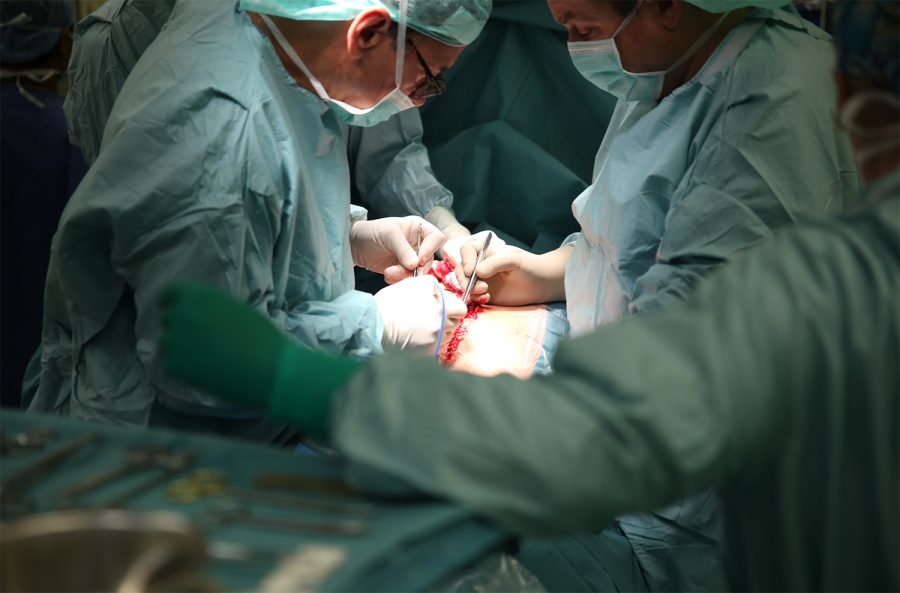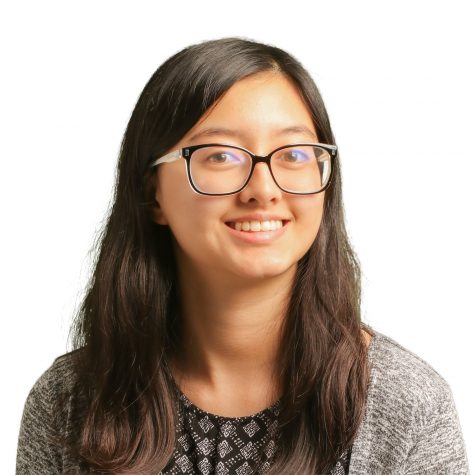Medical internship in Europe
Opportunity abroad expands views about future career
October 9, 2018
Shadowing doctors. Gross anatomy. Witnessing surgeries.
I participated in the Congress of Future Medical Leaders last year and was provided a chance to study medicine in Europe — Poland, specifically. FutureDocs Abroad is a summer internship program that allows high school students to gain the equivalent experience of third year medical students. Due to privacy laws in the United States, I am not allowed to go inside operating rooms or converse with patients about their personal health information. However, this program offers me full access to discuss patient circumstances with physicians and observe surgeries right beside a surgeon.
Although the two-week trip would primarily be inside of a hospital, I was relieved to find out that cultural tours would be included along with ample downtime to relax and gain the full European experience. I journaled my encounters and thoughts through my journey in the Eastern Hemisphere.
Day 1: Arrival at Poznan, Poland
After 13 hours of traveling from Texas, Virginia, Boston, Germany to Poland, I am finally settled at the Karolek dorms of the Poznan University of Medical Sciences (PUMS). One of the biggest perks of this trip is that I have my own dorm room and bathroom. Although everyone on the trip was jet-lagged, our chaperones insisted on touring the Botanical Gardens. I walked with my two friends, Leslie and Courtney, who became my companions throughout the entirety of the trip. Luckily, the tour was only for an hour, and we got to eat dinner and rest up for the next day.
Day 2: Getting used to Europe
Today I was introduced to the faculty of PUMS and received a full-fledged itinerary filled with our rotation schedules. I was so excited to see that I was going to shadow doctors from a variety of specialities — each one offering their personal experience and expertise in the medical field. For the rest of the day, the group went outside to hang out and enjoy the day. My friends and I naturally gravitated toward shade under a tree, and an opportunity to visit the local grocery store opened up. I stocked up on amazing Polish chocolate, Starbucks, ice cream and fruit to fuel me for the week.
Day 3: Crash course in Polish history
Traveling through downtown Poznan, I noticed an array of little shops and a display of (legal) graffiti art that coated the walls of the city. Europe has its odd quirks, such as charging you to use a public bathroom and the utter lack of air conditioning. The group visited Rogalin Castle, where Polish royalty resided during the 18th century. After the tour, I whipped out my watercolors and painted a statue behind the palace and my friends as they were comfortably hiding under the shade of a tree. Two of my chaperones Emma and Dee have made my experience enriching so far with their encouraging words and friendly conversation.
Day 4: We’ve got a fainter
It’s the first day of hospital rotations, and waking up at six in the morning for the next two weeks has been so disheartening. Internal medicine’s department was eye-opening as I witnessed an ultrasound reading, a cardiac ablation and an electrocardiogram test. The gastroenterology department was amazing as I saw the doctor performing a gastroscopy. I paid close attention as the doctor removed the polyps (abnormal tissue), keeping my eyes glued to the screen. On the other hand, a girl in my group fainted from the shock, but she ended up being alright. In the afternoon, I went to a therapeutic drug monitoring lecture where the doctor spoke about customizing drugs for an individual in order to be most effective.
Day 5: Holding a human heart
Today was an exceptionally exciting day because my “Grey’s Anatomy” moment of being in an operating room came to fruition as I walked into the scrub room, changed into hospital scrubs, and viewed the removal of a calcified mass in a clogged artery. I went to anatomy lab with Courtney and held a human heart, lung, kidney and leg. The anatomy professor, Dr. Broska, enlightened me on the basics of the human body while physically pointing out each part on a real donated body.
Day 6: An oddly interesting tumor
Head and neck surgery ended up being my favorite rotation. Surgeons such as Dr. Hanna Klimze led me around during her rotation as she extracted a large facial tumor from a patient’s cheek and examined an individual’s larynx. In addition, I observed a cosmetic nose surgery from beginning to end. This rotation convinced me that there could be a future for me as a head and neck doctor.
Day 7/Day 8: OB/GYN and Neonatology
Obstetrics and gynecology rotation consisted of observing two hysterectomies and learning about the anatomy of uteruses. Neonatology is a subspecialty of pediatrics that focuses on newborn babies, and I enjoyed seeing the nursery as well as the neonatal intensive care unit (NICU). The NICU contained babies who were born with intestines outside of their body or needed to be intubated because of genetic birth defects. I felt such sympathy toward the newborns and learned how to identify their organs through ultrasounds.
Day 9: Time to explore galore
A week of hospital rotations left me exhausted, but I was eager to explore downtown Poznan and the Market Square. Every day at exactly 12 p.m., two mechanical goats burst through the town square clock and butt heads. It’s essentially a long-held tradition that locals and tourists enjoy alike. Spending the day walking around Poznan was amazing I also trekked to River Warta, where I sat and painted the river along with the buildings that lined the landscape.
Day 10: Blood everywhere
Labor and Delivery was today’s rotation, and I nearly passed out after witnessing the sheer amount of blood that can exit a woman’s body during childbirth — especially cesarean sections. The doctors fearlessly fought their way through the tangle of intestines in order to deliver a baby, and my respect for both mothers and doctors grew on an unprecedented scale. My afternoon rotation, Medical Simulation One, was comprised of learning how to monitor blood pressure and inserting a central line intravenously. I had the most fun practicing and repeating the procedures until I knew how to properly insert a needle into a mannequin’s arm.
Day 11: Stayin’ Alive
In pediatric otolaryngology, I observed the removal of polyps inside a patient’s nose. The procedure was meant to last at least two hours, and by the end of it, my feet and back were numb and sore. This was the reality of a physician on a day-to-day basis, and I powered through by shaking out my legs every once in a while. Medical Simulation Two was where I learned how to perform CPR and other emergency procedures. “Stayin’ Alive” by the Bee Gees raced through my mind throughout the duration of the class.
Day 12/ Day 13: She’s having a seizure
Ophthalmology was a department that I did not consider to be my future career, but that thought was erased as the resident expressed her knowledge about the field. I was intrigued by the way she would interact with patients and hear about their lives outside of the hospital setting. Medical Simulation Two was all about scenarios. I performed CPR and breaths on a cardiac arrest patient in my first scenario. However, my second scenario centered around a seizing girl with an emotional sister that I had to hold back and reassure throughout the scene. This scenario was naturally my favorite, and I gained insight into the life of paramedics.
Day 14: Experimenting with cancer cells
My last hospital rotation was Pediatrics, where I followed a pediatric doctor that was giving his patients routine checkups and learned about the plight of Poland concerning their lack of medical professionals. The political climate as well was being discussed, and the talks with physicians opened my mind about how every country has their own struggles, not just the United States. Gene therapy was my afternoon lab, and I experimented with cervical cancer cells using gene therapy, which is the practice of utilizing therapeutic delivery of nucleic acid to help treat or prevent diseases. There was a closing ceremony where I conversed with my friends and received an honorary PUMS patch from Dr. Mazela.
Day 15: Long haul back home
It’s three in the morning, and I’m slowly packing up the rest of my clothes before heading to the airport. The German airport offered a plethora of music boxes, candy, hats and a cuckoo clock for me to treasure. After flying to Germany and Boston, I finally wave goodbye to my friends that made the trip worthwhile and reflected upon the last two weeks. I’ve solidified my decision to go into the medical field as an absolute yes and thanked the doctors who have impacted me the most by giving them mini paintings I created on the trip as thank you notes. My trip to Poland turned out to be the highlight of my summer, and I will forever be grateful to the chaperones who guided me on the journey, my mother who helped me finance the trip, and the never-ending support from my friends and family who encourage me to push the boundaries of what I can achieve in the future, no matter what path I choose.
If you or someone you know is interested in the FutureDocs Abroad program, feel free to reach out to me and I’d be happy to answer any questions.















